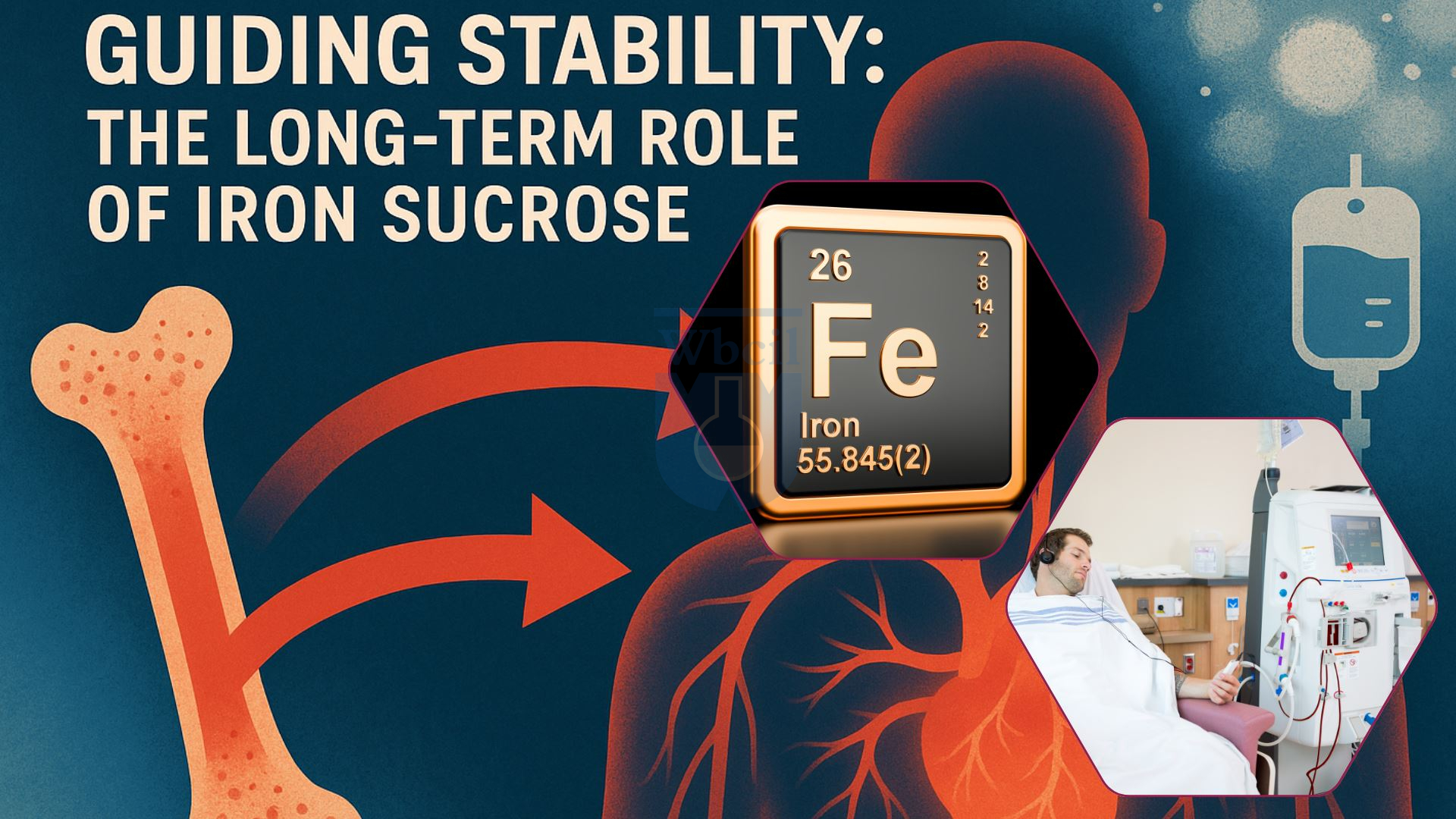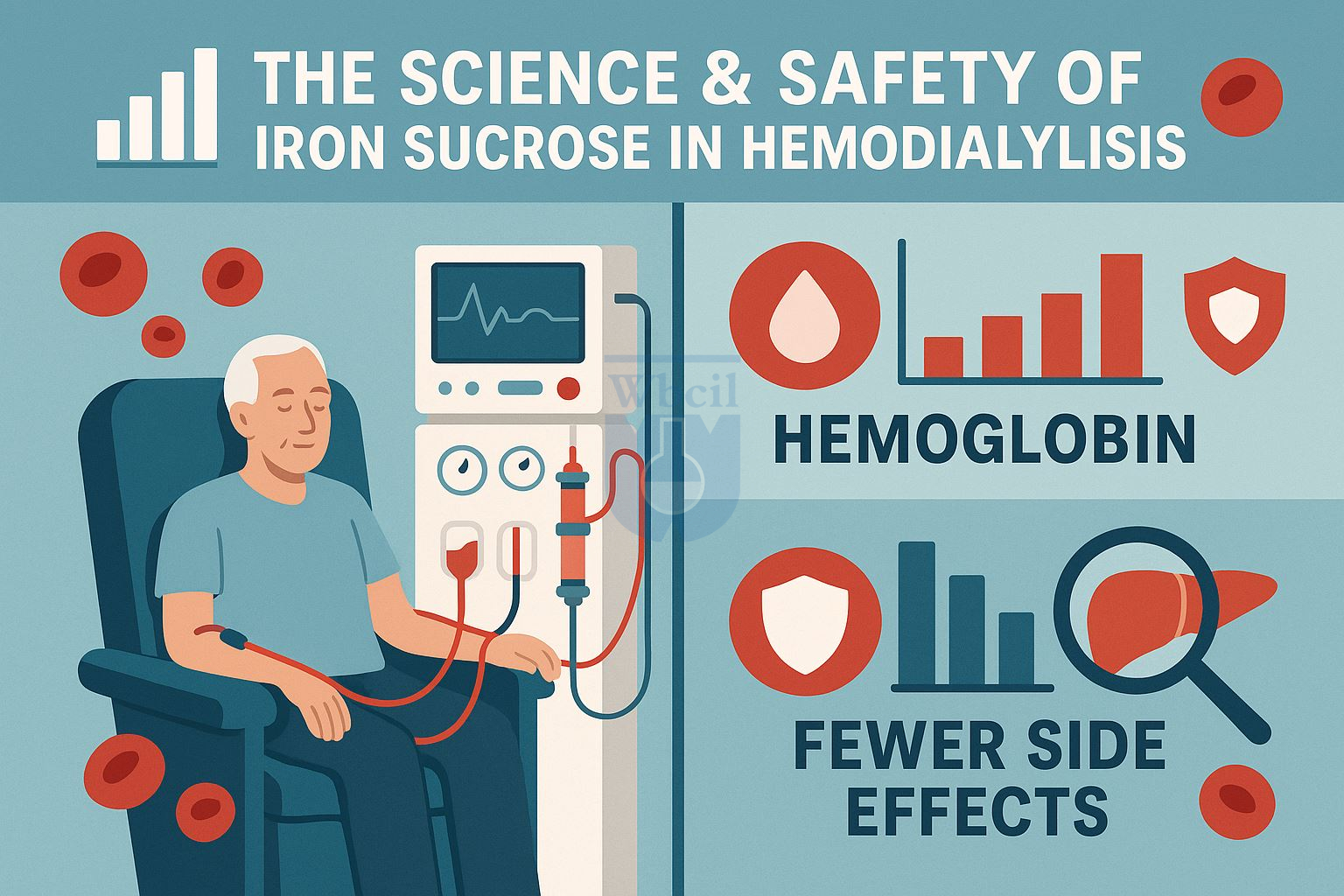Long-Term Safety of Iron Sucrose in Hemodialysis: A Comprehensive Guide
Introduction: The Iron Anchor in Hemodialysis
Imagine a ship navigating stormy seas, its anchor steadying it against turbulent waves. For hemodialysis patients, iron is that anchor, stabilizing their health by combating anemia. Approximately 70% of hemodialysis patients suffer from iron deficiency anemia, a condition that saps energy and threatens vitality. Iron sucrose, a cornerstone of intravenous iron therapy, has emerged as a lifeline for these patients, replenishing iron stores during hemodialysis treatment. But like any anchor, its strength lies in its reliability over time. The long-term safety of iron sucrose in hemodialysis is a critical concern for healthcare providers and patients alike. This article dives deep into the science, safety, and strategies behind iron sucrose in hemodialysis, exploring its mechanism, benefits, risks, and future research directions to ensure it remains a trusted tool in hemodialysis anemia management.
Understanding Iron Deficiency in Hemodialysis Patients
Hemodialysis patients are like gardeners tending a fragile crop in nutrient-poor soil. Chronic kidney disease (CKD) disrupts the body’s ability to produce erythropoietin, a hormone essential for red blood cell production, leading to anemia. Frequent blood loss during hemodialysis, coupled with reduced iron absorption, depletes iron stores, making iron deficiency a persistent challenge. Iron is vital for hemoglobin synthesis, ensuring oxygen delivery to tissues. Without adequate iron, patients face fatigue, weakness, and increased cardiovascular risks.
Oral iron supplements, once a go-to solution, often falter in hemodialysis patients due to poor absorption and gastrointestinal side effects. Intravenous iron therapy, particularly iron sucrose, has become a preferred hemodialysis solution, delivering iron directly into the bloodstream during dialysis sessions. This approach bypasses the digestive barriers, offering a more effective treatment of anemia in hemodialysis patients.

Iron Sucrose: Mechanism and Benefits
Iron sucrose is like a precision-engineered key, unlocking the body’s potential to rebuild red blood cells. As a parenteral iron treatment, iron sucrose is a complex of iron hydroxide and sucrose, administered intravenously to replenish iron stores in hemodialysis patients. It works by releasing iron into the bloodstream, where it binds to transferrin and is transported to the bone marrow for red blood cell production.
Compared to other IV iron therapies, such as ferric sucrose or iron dextran, iron sucrose offers distinct advantages. It has a favorable safety profile, with lower rates of hypersensitivity reactions. Typical iron sucrose dosing guidelines for hemodialysis involve 100-200 mg per session, administered 1-3 times weekly, tailored to the patient’s iron needs. In clinical practice, iron sucrose in hemodialysis yields rapid improvements, with hemoglobin levels often rising within 4-8 weeks, enhancing energy and quality of life for patients with end-stage renal disease (ESRD).
Long-Term Safety Profile: Clinical Evidence
The long-term safety of intravenous iron sucrose in hemodialysis is like a lighthouse, guiding clinicians through the fog of uncertainty. Recent peer-reviewed studies (2020-2024) provide robust evidence supporting its safety. For instance, the PIVOTAL trial, a landmark clinical trial, compared high-dose (400 mg monthly) and low-dose iron sucrose regimens in hemodialysis patients. The high-dose group showed a lower risk of cardiovascular events and reduced need for erythropoiesis-stimulating agents (ESAs), with no significant increase in adverse effects over a median follow-up of 2.1 years.
Another study, published in Nephrology Dialysis Transplantation (2021), compared iron sucrose to ferric derisomaltose in CKD patients, finding comparable safety profiles but slightly fewer infusion reactions with iron sucrose. Real-world evidence from hemodialysis centers further supports these findings, with data showing that iron sucrose long-term use is well-tolerated in most patients, even those with prior intolerance to other IV iron therapies. Compared to ferric sucrose, iron sucrose demonstrates lower hypersensitivity risks, though ferric sucrose may require less frequent dosing in some cases.
Potential Adverse Effects and Risk Management
Like a seasoned captain navigating rocky shores, clinicians must be vigilant about the potential risks of iron sucrose in hemodialysis. Common side effects include mild injection site reactions, headaches, and temporary taste changes, occurring in less than 10% of patients. Serious adverse reactions, such as anaphylaxis or iron overload, are rare, affecting less than 1% of patients when proper monitoring is in place.
Iron overload, a potential storm on the horizon, can occur if iron sucrose doses are not carefully managed. Risk factors include excessive dosing or inadequate monitoring of ferritin and transferrin saturation levels. Patients with active infections or certain liver conditions require extra caution, as iron supplementation in ESRD can exacerbate these issues. Monitoring protocols for long-term iron sucrose use include monthly checks of ferritin, transferrin saturation, and complete blood counts, with periodic liver and heart function assessments to detect early signs of complications.
Best Practices for Long-Term Iron Sucrose Administration
Administering iron sucrose in hemodialysis is like tuning a complex instrument—precision is key. Optimal iron sucrose dosing guidelines recommend 100-200 mg per hemodialysis session, adjusted based on iron parameters. For hemodialysis anemia management, clinicians should aim for ferritin levels of 200-700 ng/mL and transferrin saturation of 20-40% to avoid iron overload while ensuring adequate iron stores.
Patient monitoring is critical in hemodialysis treatment protocols. Regular blood tests guide dose adjustments, and clinicians should watch for signs of infection or hypersensitivity. If ferritin levels exceed 700 µg/L or transferrin saturation surpasses 40%, iron sucrose administration protocols may require temporary discontinuation. Integrating iron sucrose into hemodialysis solution protocols involves coordinating with ESAs and other drug therapies to optimize anemia treatment outcomes in ESRD.

Future Perspectives and Research Directions
The horizon of iron sucrose in hemodialysis is bright, but uncharted waters remain. Ongoing clinical trials are exploring long-term outcomes, particularly in diverse patient populations. For example, a 2023 study is investigating iron sucrose treatment outcomes in ESRD patients with concurrent heart failure, aiming to clarify cardiovascular safety. Emerging alternatives, such as ferric carboxymaltose, are being compared to iron sucrose in drug trial phases to assess efficacy and safety differences.
Areas needing further investigation include the optimal frequency of iron sucrose doses in long-term hemodialysis treatment and the impact of iron sucrose in chronic kidney disease on bone health. The latest research on iron sucrose safety emphasizes the need for personalized dosing strategies, particularly for elderly patients or those with comorbidities. FDA guidelines on iron sucrose usage underscore the importance of tailored protocols to minimize risks while maximizing benefits.
Conclusion: A Safe Harbor for Hemodialysis Patients
Iron sucrose is a trusted anchor in the stormy seas of hemodialysis, offering a reliable solution for managing anemia in dialysis patients. Clinical trials and real-world evidence confirm its long-term safety when administered under careful monitoring, with rare serious adverse effects and significant benefits in restoring iron stores. For healthcare providers, integrating iron sucrose into hemodialysis solution protocols requires precision, regular monitoring, and adherence to dosing guidelines. As research continues to refine our understanding, iron sucrose remains a cornerstone of hemodialysis anemia management. Clinicians are encouraged to stay informed about the latest research on iron sucrose safety and collaborate with iron sucrose manufacturers for pharmaceutical-grade supplies to ensure optimal patient outcomes.
Clinical studies show iron sucrose can be safely administered for years when properly monitored. Most long-term studies demonstrate safety profiles extending 2-5 years, with some patients receiving treatment for over a decade under careful medical supervision.
The most frequent side effects include mild injection site reactions, headache, and temporary taste changes. Serious adverse events are rare (less than 1% of patients) and may include allergic reactions or iron overload when monitoring is inadequate.
Both iron sucrose and ferric sucrose have demonstrated good long-term safety profiles. Iron sucrose typically shows lower rates of hypersensitivity reactions, while ferric sucrose may require less frequent dosing. The choice often depends on individual patient factors and physician preference.
Iron overload is possible but preventable with proper monitoring. Regular testing of ferritin levels, transferrin saturation, and other iron parameters helps healthcare providers adjust dosing to maintain optimal iron levels without accumulation.
Essential monitoring includes monthly ferritin levels, transferrin saturation, complete blood count, and periodic assessment of liver function. Some centers also monitor heart function, as iron overload can affect cardiac health over time.
Patients with active infections, known hypersensitivity to iron preparations, iron overload conditions, or certain liver diseases may not be suitable candidates. Pregnant women and patients with specific cardiac conditions require special consideration.
Most patients show improvement in iron parameters within 2-4 weeks, with hemoglobin levels typically increasing within 4-8 weeks. However, long-term benefits and optimal iron stores may take 2-3 months to establish.
Iron sucrose has minimal drug interactions. However, it should not be mixed with other medications in the same IV line. Some medications like ACE inhibitors or certain antibiotics may require timing considerations during hemodialysis treatment.
Missing doses can lead to gradual depletion of iron stores and return of iron deficiency symptoms. Healthcare providers typically develop catch-up protocols, but sudden discontinuation rarely causes immediate health risks, unlike some other medications.
While iron sucrose has higher upfront costs, it’s often more cost-effective long-term due to better absorption, improved patient compliance, and reduced need for additional treatments. The efficiency of IV administration during existing hemodialysis sessions also adds value.
